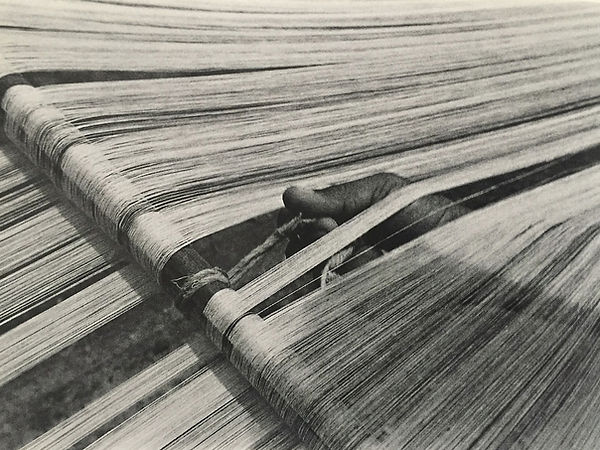Khadi
Khadi transcends being merely a fabric; it embodies an "art de vivre," symbolising independence and a return to fundamental values. Its origins trace back to ancient Vedic times (5000 BC), where detailed accounts describe the handweaving of cotton and natural fibres with gold thread on a handloom. The term 'Khadi' derives from 'Khaddar,' denoting handspun fabric in India. The modern Indian Khadi, as we recognize it, was revitalised by the freedom fighter Mahatma Gandhi during the Khadi Movement.
Crafted exclusively with handspun yarn, Khadi is produced across diverse regions of India. This fabric comes to life in households, where cotton yarn spun on a "charkha" or spinning wheel is meticulously woven by hand. Depending on the part of the country, certain types of Khadi employ silk or woollen yarns. It is a remarkable fabric that pays utmost homage to the environment, serving well in both summer and winter.
The process of Khadi production holds multifaceted benefits for society and the natural world. Its manual processing empowers rural communities to domestically generate income, mitigating the need for rural-to-urban migration – a prevalent trend that strains the environment and often leads to family separation. The Khadi technique boasts a commendable low carbon footprint, in stark contrast to modern mechanical weaving methods. This owes to the reliance on human skill and dexterity in the processing, spinning, and weaving phases, as opposed to energy-intensive industrial weaving that emits significant emissions.

Benefits of Khadi
Khadi fabric possesses a unique and distinguishable character, displaying either a crisp texture akin to cotton khadi or a supple quality resembling its silk counterpart. Over the past decade or so, the fabric has experienced a rejuvenation through changes, innovations, and adaptations, infusing it with renewed vitality. Khadi presents a palette of soothing hues that are gentle on the eyes. Its versatile nature and softness make it an easily manageable fabric, offering a diverse range and adapting seamlessly to the wearer's body. Khadi showcases a delightful array of weaves, each exuding beauty, and it ensures exceptional comfort as a textile. When tailored to the appropriate fabric GSM (grams per square metre), khadi becomes a versatile choice suitable for both summer and winter wear.

